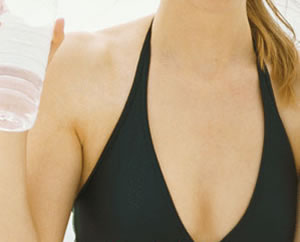Boob jabs to replace boob jobs? Why implants are probably still the best option
27 September 2012
By Plastic Surgeon Dr Dirk Kremer.
 The procedure of transferring fat transfer to breasts has been practised for some time, so it is technically not a new plastic surgery developments , but there has definitely been a renewed interest of late - especially in the wake of the PIP implant scandal.
The procedure of transferring fat transfer to breasts has been practised for some time, so it is technically not a new plastic surgery developments , but there has definitely been a renewed interest of late - especially in the wake of the PIP implant scandal.
Personally I still recommend breast augmentation using implants as they offer the offer the best option for most women wanting natural looking breasts (split-muscle breast augmentation).
The technique is properly called lipo-filling. Earlier this month, it was discussed at the G20 Regenerative Plastic Surgery Forum in Montreux, Switzerland, where plastic surgeons discussed how to standardize the procedure because success rates are currently widely variable.
Fat clusters are removed by liposuction from one part of the body, to be purified and injected elsewhere. The advantage of using a patient’s own fat is that immunosuppressive drugs are not needed, which they would be for transplants from other people. No silicone is involved, and as technology improves, faster transfer times and longer-lasting results are possible.
However, there are a number of problems with the technique as it currently stands. Over 50% of the fat grafted is reabsorbed within a few months. The technique of grafting harms fat cells, and there is also the problem of a quick vascularisation of the fat.
This leads to a variety of practical issues. One is that many of my patients are slim women, who have very little fat to spare, especially when you need double the final amount required! Because of the time-span involved in reabsorption, the procedure must either be repeated, or over-corrected, with the patient having a much bigger breast for a few months until it settles down. It is also harder to predict final shape and symmetry, because the fat may not be reabsorbed evenly.
Another vital consideration is the health implications of the technique. Injected fat can lead to the formation of oil cysts, necrotic fat and scar tissue which leads to so-called dystrophic calcifications. The resulting lumps can distress women during their manual breast screening routine. Calcifications discovered in a mammogram which usually are a sign for cancer may have to be biopsied to rule out a malignant tumor.
Previously, macrolane, an injectable filler was used by some surgeons for “lunchtime boob jobs”, was withdrawn after the Medicines and Healthcare products Regulatory Agency (MHRA) said it could affect mammogram readings and make diagnosis more difficult.
I wrote my doctor’s thesis about tissue engineering of human cartilage for transplantation in nasal reconstruction and spent years doing research in labs. I started in 1993 and there are still problems involved with this technique. It will be a long time before all the problems will be overcome with these kind of techniques.
The PIP-implants scandal naturally raised interest in other techniques, but that was an exceptional situation resulting from deliberate fraud on the part of the manufacturer. Normally implants are tested to a very high level, and everyone, from plastic surgeons to politicians, is determined to make sure it cannot happen again.
Breast augmentation using implants is a reliable technique with long-term results, and one that allows for breast cancer screening without any problems. Breast augmentation is a clean, straight-forward procedure with long lasting results.
Virtual Consultations
Dr Kremer is now accepting virtual consultations, via Skype or WhatsApp. If you would like a virtual consultation, or would like more information, simply get in touch with us via phone, email or through our contact form and we will schedule a date and time for your consultation.



